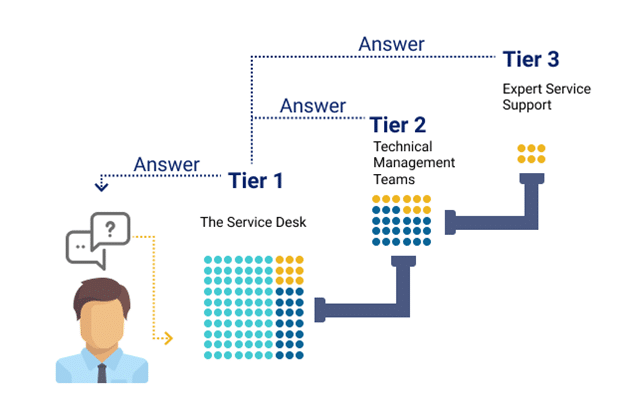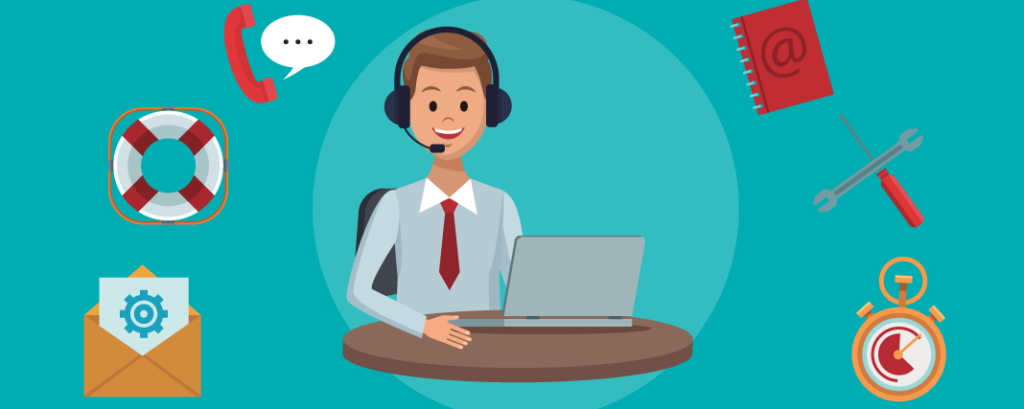There are a lot of things to consider when you look for a helpdesk solution. Depth, response times, structure, escalation paths, service level agreements, first call resolution, and more. Here are a few keys to selecting an awesome IT helpdesk solution that will help you make the right choice.
Depth
One thing that you should be on the lookout for with any helpdesk that you select is depth. That means that you need more than one guy picking up tickets and helping users. Preferably you have an entire team of high-quality technicians at your disposal at any give time. Those IT helpdesk professionals should also know your environment and have documentation at their disposal so they can offer a high quality of service to your users.
Response Times and SLA
Most helpdesks respond to incoming issues based on their severity and impact. That means that they have a way to recognize which issues will stop someone’s productivity completely, and which will affect many users. The issues that have a high level of severity and impact together should be addressed first. The matrix ends up looking something like this.

This way the biggest issues that hit the most users get fixed first, and those with less impact for a single user get tackled after.
Industry response times can vary wildly from provider to provider, so this is an important question to ask when looking at different solutions. The very best helpdesks will have a defined matrix for response times based on severity and impact that looks something like this.

These guarantees for response times are called SLA (service level agreement). That means that the provider will responds to all requests within these timeframes on 90% or more of all tickets. If you’re looking at a helpdesk solution, and they don’t have SLA’s you should be concerned. That might indicate that they don’t track response times well, or that they don’t want to give their clients any guarantees. Both of those should be a red flag.
Structure and Escalation Paths
Having a helpdesk with a defined structure and process is key to having confidence in the solution they are providing. The best helpdesks are arranged with structure to them. Most have tiers 1-3 for their engineers with a pyramid structure. That means that there are more tier 1 technicians that take most issues and escalate the more difficult or specialized issues to tier 2 and tier 3 engineers. There are typically less tier 2 and even less tier 3s within an organization.

This structure is vital because it gives engineers a route for complex issues that can’t easily be resolved at the tier 1 level. In addition, the best helpdesks will have some time limit set for their engineers. At the tier 1 level it is frequently around 30 min. If they cannot resolve an issue in that time, they need to escalate it to tier 2 or tier 3. This ensures that the client will have the right resource assigned so that their issue can be addressed in a timely manner.
If the helpdesk solution that you’re looking at doesn’t have structure and defined escalation path it is much more likely that issues will get stuck and go unresolved for longer periods of time. Take care to ask about this as it will tell you their level of maturity as an organization.
First call Resolution
When your users have an IT issue, they want to get it resolved as quickly as possible. That’s why first call resolution is such an important statistic to ask about when looking at IT helpdesk solutions. First call resolution means what percentage of request can the helpdesk resolve on the first call without escalation. This is also within the first 30 minutes in most cases. That’s where users will have the optimum happiness.
A great helpdesk will be able to solve between 70-80% of all users request at Tier 1 within the first 30 minutes. That means that 4 out of 5 times they call they will get resolved quickly without escalation. If a company has statistics significantly lower than this (50% or below) it typically means that their helpdesk is not actually IT guys, but minimum wage workers reading a predefined script. Think comcast customer service. They will tell you to turn it off and then on again but can’t do much beyond that.
It should also be a concern if the helpdesk provider you’re talking with doesn’t know what their number is for first call resolution. That means they don’t track it, which means they likely don’t value it. It also makes it very difficult to improve upon.
Summary
If your IT helpdesk solutions doesn’t meet these simple criteria it might be time to look elsewhere. A quality provider will know exactly how to help, will have defined roles and processes, guaranteed SLAs, and a focus on first call resolution. If you don’t feel like that’s the case, call us. We can help.


